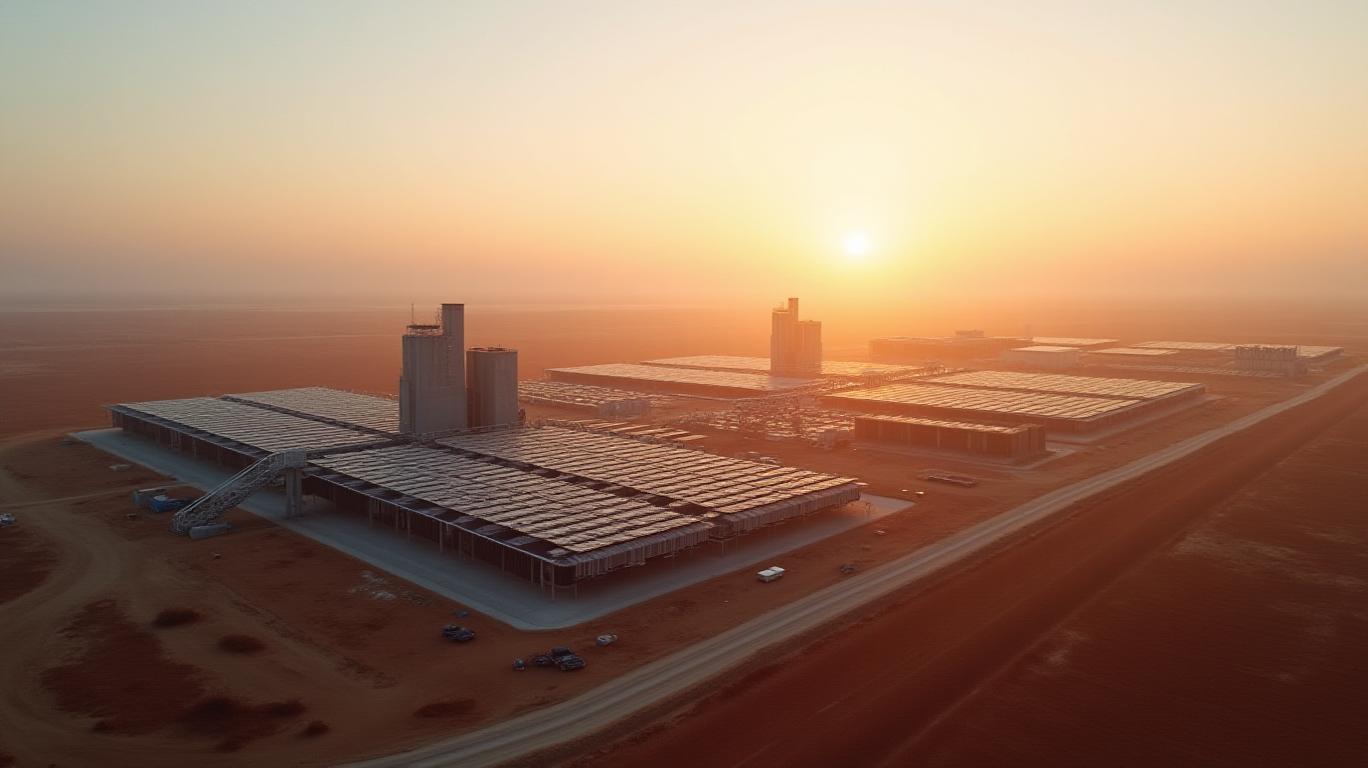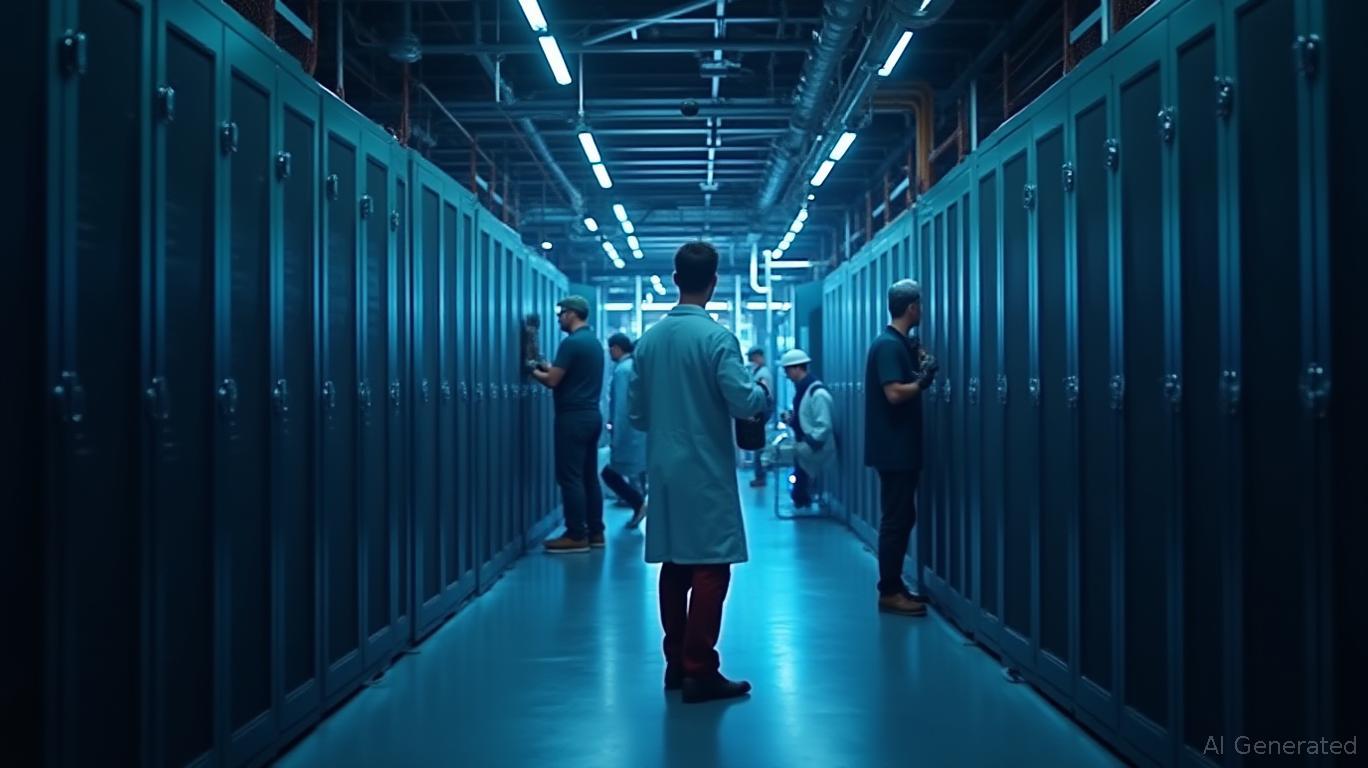Bloom Energy's Gigawatt Fuel Cell Deal with AEP: A Boon for AI Data Centers
Thursday, Nov 14, 2024 6:20 pm ET
In a significant development, Bloom Energy (BE) has announced a gigawatt fuel cell procurement agreement with American Electric Power (AEP) to power AI data centers. This strategic partnership signals a major shift in the energy sector, with BE poised to gain market share and solidify its competitive position. As an investor with a focus on stability, predictability, and consistent growth, it's essential to analyze the implications of this deal and its potential impact on the broader market.
The agreement, involving up to 1 GW of fuel cells, including an initial 100 MW order, supports Bloom's expansion into commercial and industrial settings. This deal underscores Bloom's commitment to clean energy solutions, with fuel cells offering a 34% reduction in CO2 emissions and eliminating SOx and NOx emissions when operating on natural gas. With AI data centers' power demands surging, Bloom's high-power density and rapid deployment capabilities position it well for future growth.
Fuel cells, like those offered by Bloom Energy, have significant potential to reduce the environmental impact of AI data centers. Bloom's fuel cells generate power through an electrochemical reaction, which is cleaner than combustion-based methods, reducing CO2 emissions by 34% compared to current generation sources in the PJM Interconnection region. Additionally, they virtually eliminate sulfur oxides (SOx) and nitrogen oxides (NOx) emissions when operating on natural gas. This makes them an attractive alternative to traditional power sources for data centers, which are often criticized for their high energy consumption and carbon footprint.
However, it's crucial to consider the potential environmental drawbacks of fuel cell technology, such as the need for natural gas or hydrogen as a fuel source. To mitigate these issues, Bloom Energy's fuel cells can be designed to operate on pure hydrogen, enabling a transition to lower carbon energy sources. Furthermore, the use of renewable energy sources to produce hydrogen through electrolysis can further reduce the overall emissions footprint.
As an investor, it's essential to remain vigilant about external factors that could impact the semiconductor supply chain, such as labor market dynamics, wage inflation, and geopolitical tensions. While government initiatives can play a role in addressing these challenges, independent corporate initiatives are crucial for long-term success.
In conclusion, Bloom Energy's gigawatt fuel cell procurement agreement with AEP is a strategic move that aligns with the company's long-term growth strategy and financial projections. This deal positions BE well for future growth in the high-growth sector of AI data centers, while also bolstering its commitment to clean energy solutions. As an investor, it's important to monitor the progress of this partnership and assess its impact on the broader market, while maintaining a balanced portfolio that combines growth and value stocks.
The agreement, involving up to 1 GW of fuel cells, including an initial 100 MW order, supports Bloom's expansion into commercial and industrial settings. This deal underscores Bloom's commitment to clean energy solutions, with fuel cells offering a 34% reduction in CO2 emissions and eliminating SOx and NOx emissions when operating on natural gas. With AI data centers' power demands surging, Bloom's high-power density and rapid deployment capabilities position it well for future growth.
Fuel cells, like those offered by Bloom Energy, have significant potential to reduce the environmental impact of AI data centers. Bloom's fuel cells generate power through an electrochemical reaction, which is cleaner than combustion-based methods, reducing CO2 emissions by 34% compared to current generation sources in the PJM Interconnection region. Additionally, they virtually eliminate sulfur oxides (SOx) and nitrogen oxides (NOx) emissions when operating on natural gas. This makes them an attractive alternative to traditional power sources for data centers, which are often criticized for their high energy consumption and carbon footprint.
BE Net Income YoY, Net Income
However, it's crucial to consider the potential environmental drawbacks of fuel cell technology, such as the need for natural gas or hydrogen as a fuel source. To mitigate these issues, Bloom Energy's fuel cells can be designed to operate on pure hydrogen, enabling a transition to lower carbon energy sources. Furthermore, the use of renewable energy sources to produce hydrogen through electrolysis can further reduce the overall emissions footprint.
As an investor, it's essential to remain vigilant about external factors that could impact the semiconductor supply chain, such as labor market dynamics, wage inflation, and geopolitical tensions. While government initiatives can play a role in addressing these challenges, independent corporate initiatives are crucial for long-term success.
In conclusion, Bloom Energy's gigawatt fuel cell procurement agreement with AEP is a strategic move that aligns with the company's long-term growth strategy and financial projections. This deal positions BE well for future growth in the high-growth sector of AI data centers, while also bolstering its commitment to clean energy solutions. As an investor, it's important to monitor the progress of this partnership and assess its impact on the broader market, while maintaining a balanced portfolio that combines growth and value stocks.









